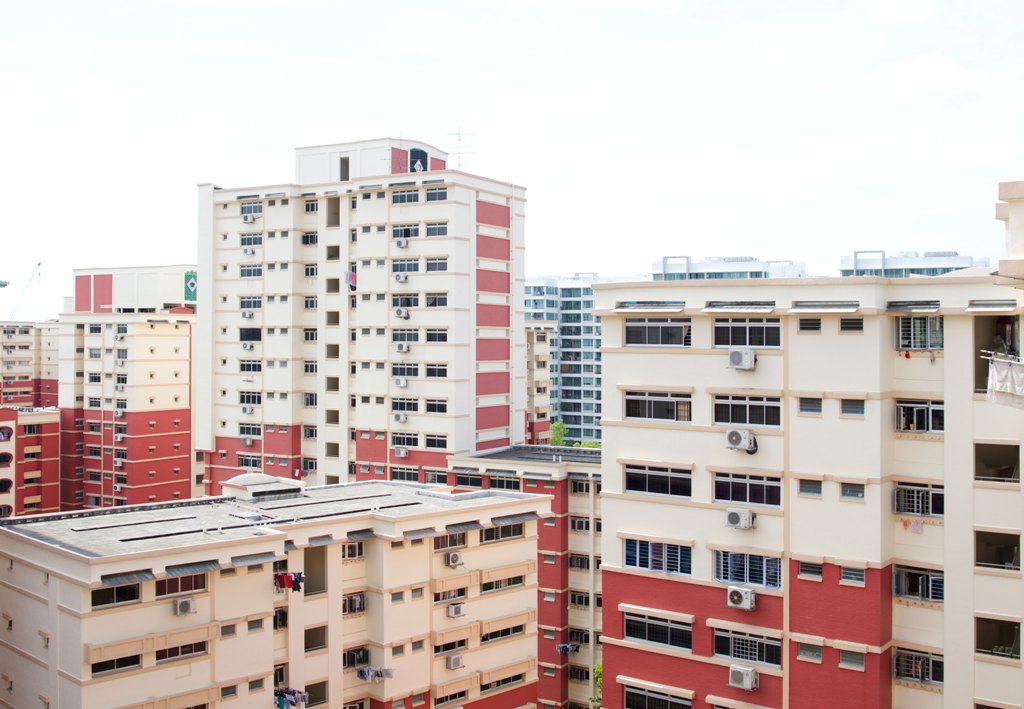The Ministry of National Development (MND) and Housing & Development Board (HDB) have selected over 53,000 HDB flats for upgrading, in the latest selection of the Home Improvement Programme (HIP), an official news release stated. These flats are located island-wide, including Jurong West, Hougang, Woodlands, and Pasir Ris.

Over SGD 742 million will be allocated for these upgrading works.
Implemented in 2007, HIP helps flat owners to proactively address common maintenance issues such as spalling concrete and ceiling leakage that arise due to wear and tear in older flats, and provide improvements to enhance living conditions of older flats.
There are two main components of work under the HIP:
- The Essential Improvements ensure that basic structural and safety needs of older flats are met, and are fully funded by the Government for Singapore Citizen households.
- The Optional Improvements are heavily subsidised by the Government, with Singapore Citizen households paying as low as five percent of the cost, depending on the flat type. Flat owners have the flexibility to choose the Optional Improvement items they would like to include during the upgrading process.
Excluding the latest selection of the HIP, about 410,000 flats have been selected for HIP as on 30 June 2024. Of these, about 90 percent (about 370,000 flats) have been upgraded. Since its launch in 2007, the Government has spent about SGD 4 billion on HIP.
Enhancements to spalling concrete repairs under HIP
Spalling concrete is a result of natural wear and tear due to the corrosion of steel reinforcement bars embedded in the concrete floor and ceiling slabs. This can generally be prevented through maintenance measures by flat owners, such as keeping the area well-ventilated. However, in areas prone to high levels of moisture and humidity, such as toilets, corrosion can still happen due to prolonged exposure to dampness.
Under the HIP, HDB takes the opportunity to help flat owners repair spalling concrete in their flat under the programme’s Essential Improvement works. As part of HDB’s continuous efforts to improve the quality and effectiveness of its programmes, flats selected for HIP this year, will benefit from a new enhanced Corrosion Resistant Repair (CRR) method for spalling concrete in toilets, which greatly reduces the likelihood of spalling concrete recurring at the same spot.
The new CRR method involves applying a corrosion-retardant coating to the entire toilet ceiling to protect the concrete structures against corrosive substances, and a bonding agent thereafter to better bind the layers of coating to the concrete, in the following steps:
- Similar to current localised patch repairs for spalling concrete, loose concrete will be removed and exposed steel bars will be scraped and cleaned of rust.
- Before the repair area is repatched, an anti-corrosion coating will be applied over the exposed rebars to form a protective layer to reduce the risk of further rusting.
- After the repair to the spalled area(s) is completed, the corrosion-retardant coating will be applied to the entire toilet ceiling to protect the concrete structures against corrosive substances. This enhances the ceiling’s resistance to spalling concrete at the applied area.
- Thereafter, a bonding agent will be applied to the entire toilet ceiling to better bind the layers of coating to the concrete.
- A final coat of paint will then be applied to the toilet ceiling.

The rollout of this enhanced repair method to address spalling concrete in HDB toilets under HIP follows the success of an earlier trial by HDB which began in November 2021. As part of the trial, HDB had used the CRR method to carry out repairs to spalling concrete in the toilets of over 300 flats that were undergoing HIP. Sample checks on these flats so far have not revealed any further spalling in the repaired toilets.
The CRR method, which is more costly and requires more time for application, will generally be used for the repair of spalling concrete in toilets, which are most prone to spalling. For spalling concrete in other locations, such as the kitchen, living room and bedroom, HDB will continue with the current localised repair method, which remains effective.
HDB is committed to enhancing the comfort and safety of HDB residents. We will also continue to study and leverage innovative technology solutions to improve liveability in our estates and flats.


